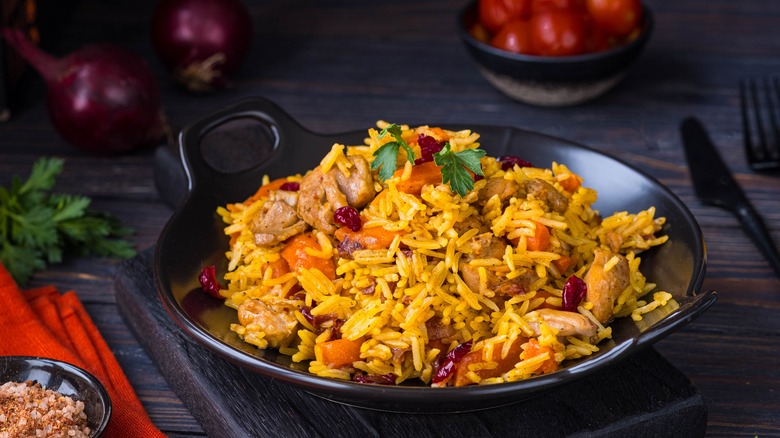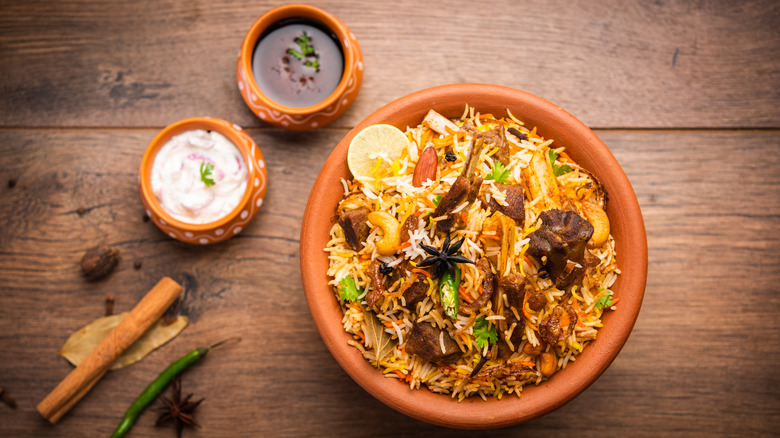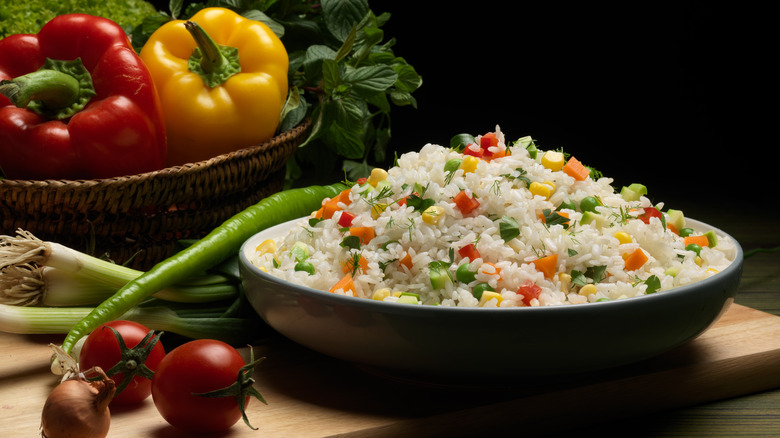There Are More Versions Of Rice Pilaf Out There In The World Than You Think
When it comes to selecting wholesome side dishes to accompany your main meals, a popular choice for many home cooks is the easy-to-whip-up rice pilaf. We are not referring to the simple boxed rice pilaf mix that is a constant in many households, but the original rice dish that dates back centuries and can be made in a variety of cooking styles, such as Indian, Middle Eastern, and Caribbean, to name just a few.
This easy dish is different from mushed rice recipes such as risotto. Here, each grain of rice stands separately and is steeped in the flavor of the chosen aromatics. Rice pilaf with apples and pumpkin seeds is an exciting recipe that captures the essence of this age-old dish well. Interestingly, pilaf as a cooking concept isn't limited to cooking with rice. It is often made with alternate grains in different parts of the world, like an ancient grain pilaf. Intrigued by this multi-faceted dish? Let's delve deeper into its fascinating history which begins in the East and travels over centuries to the west, creating many versions.
The origins of rice pilaf in the East
There are few dishes around the world with as rich and complicated a history as pilaf. While historians and food archivists hotly debate the region in which pilaf originated, there are two prominent claimants – India and Persia (modern-day Iran). Interestingly, the history of these regions is closely intertwined from the Middle Ages onward because the Mughals from Persia came to rule various parts of India around this time. It is unclear which side influenced the other in creating this rice dish, but both cherish their own version of pilaf (or pulao) as loved dishes in their respective countries.
The essential difference between the Persian and the Indian varieties is that in the former, the rice is cooked in a flavored broth. In the latter, more steps may be added, where the meat and rice are cooked separately and then together. Numerous spices are also included to keep with the preferred flavor profile of this region.
The popularity of this dish soon saw it spread to other parts of the world, such as the Middle East and Africa, where the style of pilaf uses olive oil for cooking and may include sweet additions such as regular and dried fruits.
Rice pilaf variations in the West
The Ottoman invasion introduced this dish to Europe — particularly Greece. The signature element of the Greek pilaf is when long-grained rice is cooked in garlic, onions, and other flavorful herbs for which this part of the world is best known. The Spanish made it their own by adding paprika, jalapeño peppers, and drained chickpeas.
Eventually, it traveled farther along the world when Indian migrants brought it to the Caribbean. This is perhaps where the original dish's most significant change was introduced. Inspired by cooking ideas from Europe and Africa, the people in this region first marinated the meat in ingredients of their choice — think onions, tomatoes, peppers, and even brown sugar — before it was cooked or stewed. Even the pilaf to which this meat would be added would be garnished with several additions, including almonds, olives, and more. These recipes often include citrus flavors such as orange juice or lime.


